Spring migration.
Those two words are enough to induce rapid heartbeat and manic, anticipatory glee among birders.
Why, you ask?
Every year between March and May, millions of birds stream northward into the United States from their wintering grounds in Central and South America. Some settle in for the breeding season, while others wing their way north to Canada.
For some species, the only time to see them on U.S. soil is a few-week window in the spring and fall. Spring migration is arguably glitzier, as both males and females are strutting their stuff in bright, colorful breeding plumage.
So where do you go to see spring migration in action? Check out our picks below, and share your favorite birding sites in the comments.
Top 10 List
-
Dry Tortugas, Florida
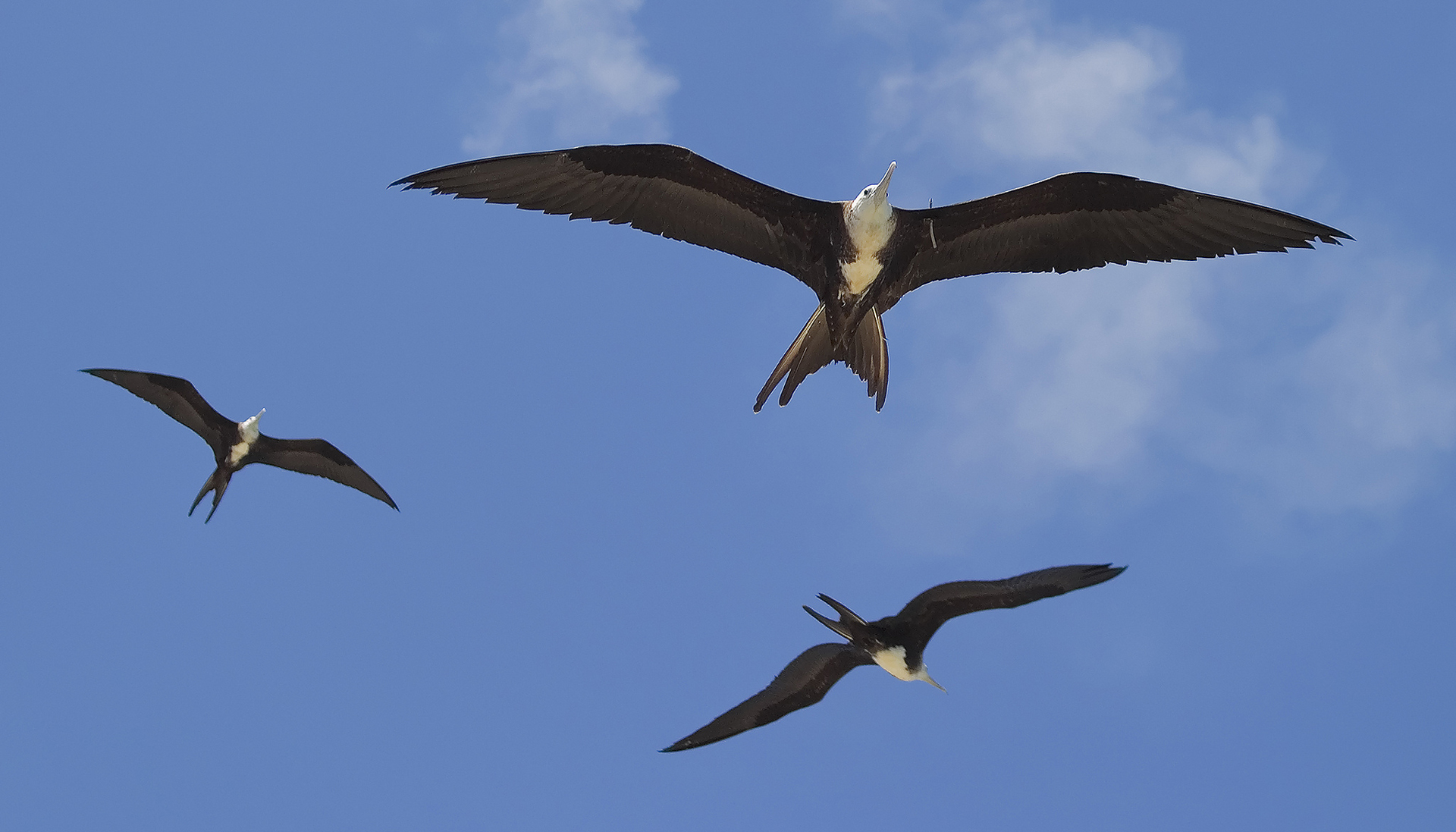
Magnificent frigatebirds at Dry Tortugas ⎯a species that Sibley’s birding guide aptly describes as “sinister-looking.” Photo: © Matthew Paulson / Flickr Claim to fame: Weird vagrants and storm-tossed rarities
When to go: March, April, May
What you’ll see: sooty tern, masked booby, magnificent frigatebird, neotropical migrants
Best for: Travelers, listers, and rarity-chasers
Nearly 70 miles west of Key West, the Dry Tortugas islands are a literally life-saving stop for neotropical migrants — songbirds and other species that migrate from Central and South America. For these birds, the fastest way to get to the U.S. is across the Gulf of Mexico, but flying 600 miles across open water in a single flight is a daunting and downright dangerous obstacle for a songbird weighing 1 ounce or less. These sandy islands offer a place for birds to rest and refuel, and a safe haven in bad weather.
Things get weird in Dry Tortugas, even by Florida’s standards. The bird list is brimming bizarre species — like fork-tailed flycatchers and bananaquits — many of which are blown in by storms. Even the expected species, like warblers, tanagers and orioles, are often seen foraging on the beach, which is a strange sight for species usually found in the forest.
For birders, the only access to the islands is by boat or plane. Those willing to make the journey will also be rewarded by rare shorebirds, like masked booby, black noddy, brown noddy, and sooty tern.
-
High Island, Texas
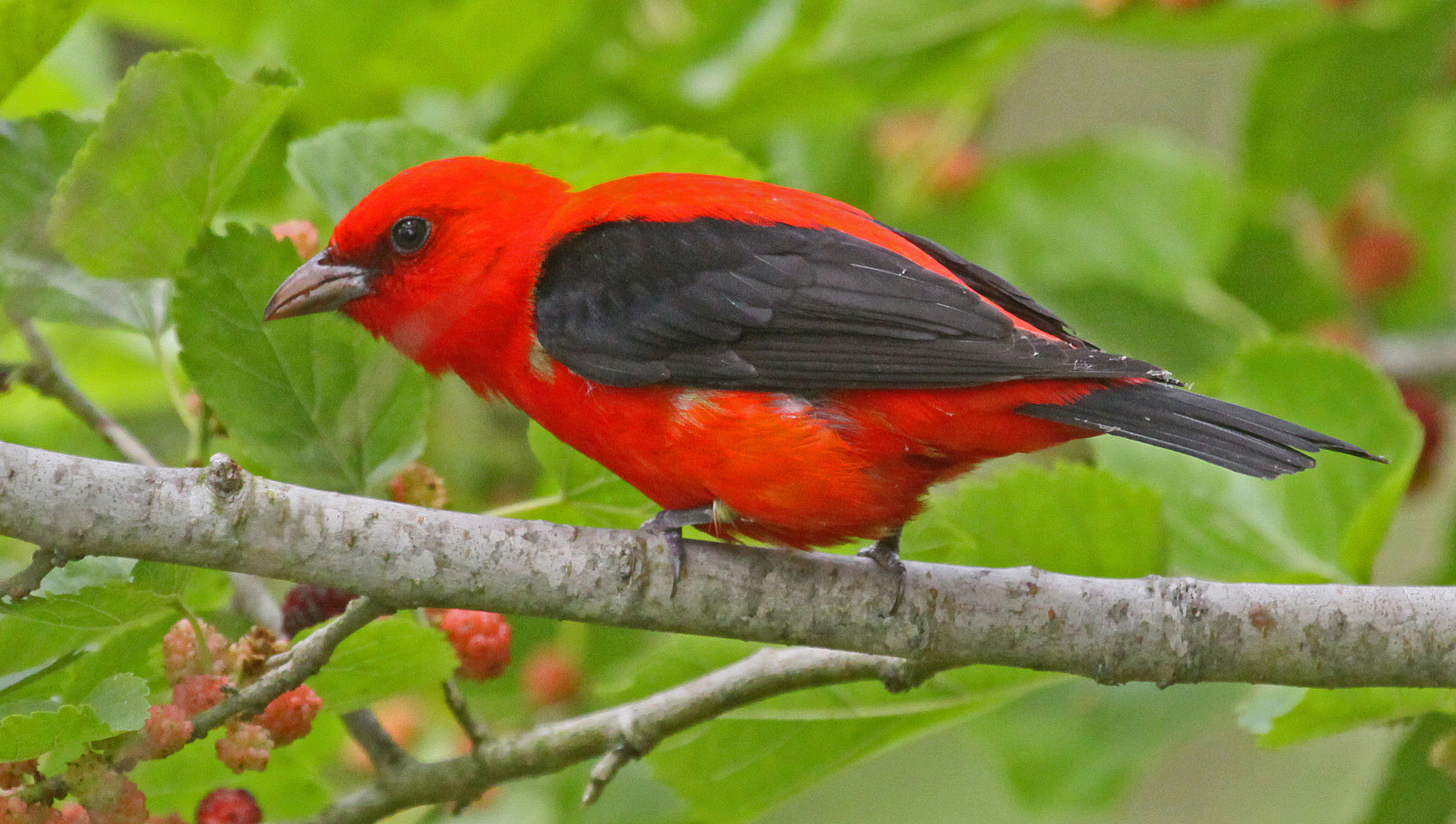
Scarlet Tanager at Smith Oaks, High Island. Photo © Jerry Oldenettel/Flickr through a Creative Commons License. Claim to fame: Legendary fallout
When to go: April through mid-May
What you’ll see: Warblers, tanagers, vireos, and buntings
Best for: Fallout junkies and migration nerds
This nondescript island between Galveston, Texas and the Louisiana border is legendary for one thing — fallout. What’s fallout? Ask Jack Black. (Yes, that Jack Black.)
Even if you aren’t lucky enough to see “a hundred thousand birds literally dropping from the sky,” High Island offers fantastic birding during migration. Birders shooting for a Big Day — trying to see as many species in a 24-hour period — easily top 100 species or more just at High Island. One team of expert birders from The Cornell Lab of Ornithology broke the national Big Day record with a jaw dropping 294 birds, in part thanks to a stop at High Island.
Don’t miss the oak grove in Smith Oaks Bird Sanctuary, where tall trees attract migrants like a magnet, or Purkey’s Pond, where grandstand bleachers overlook a pond where migrants drink and bathe.
-
Magee Marsh Wildlife Area, Ohio
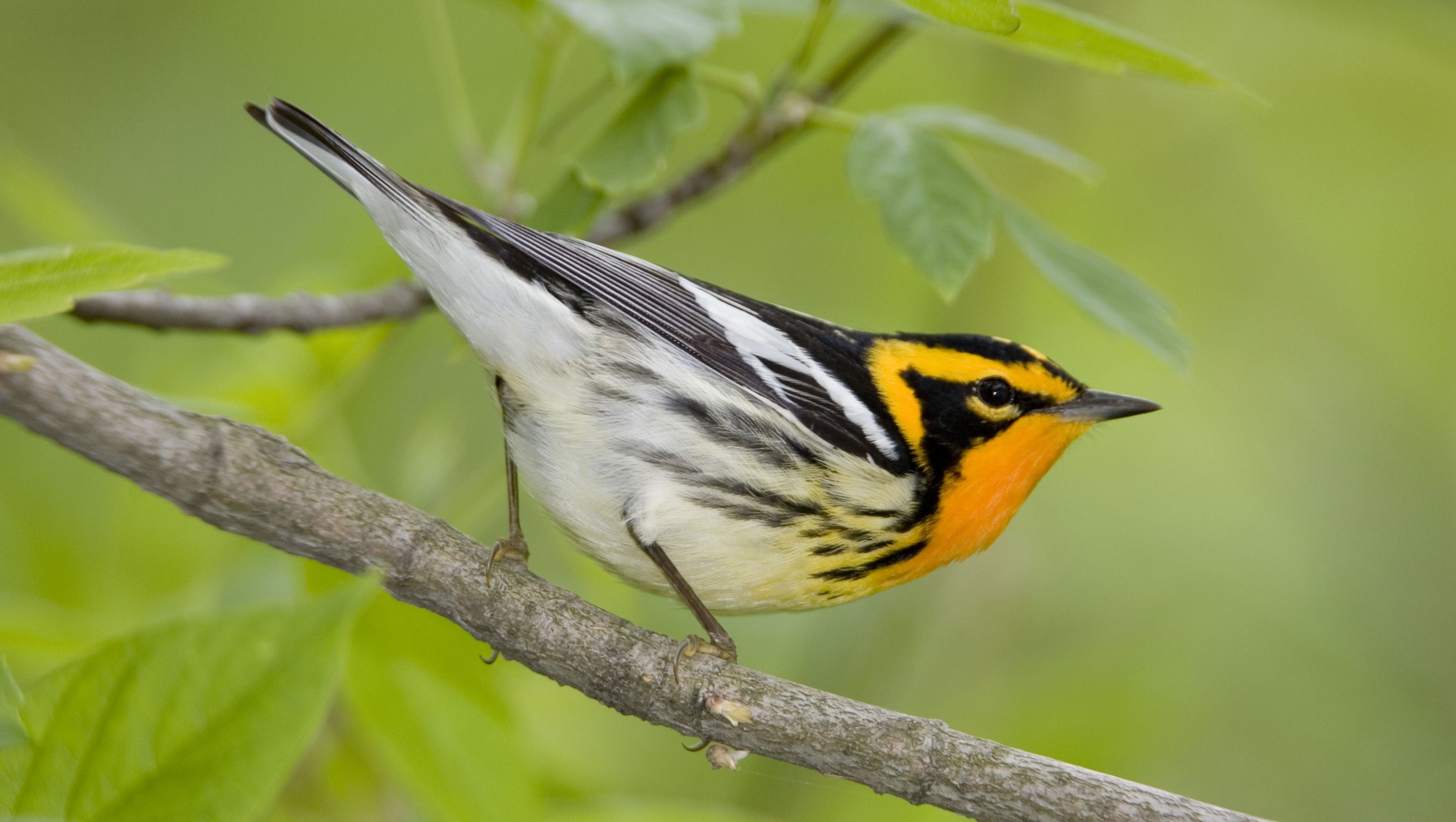
A blackburnian warbler at Magee Marsh: © Laura Gooch / Flickr Claim to fame: The Warbler Capital of the World
When to go: The second and third weeks of May
What you’ll see: 30+ warblers species
Best for: Warbler enthusiasts
A 30 warbler day — both a birder’s dream a real possibility at Magee Marsh. There are about 56 species of warblers in the U.S., depending on how you slice the deck, and a good handful of those are quite rare. (A few tricky species, like the yellow-breasted chat, are lumped in with the warblers despite being the subject of much taxonomic debate.)
Seeing 15+ warbler species on a single day is an achievement, while a 30-warbler day is something to brag about for years. If you’re going to go for the big 30, go to Magee Marsh.
Situated on the southern shore of Lake Erie, Canada-bound migrants stop here to refuel after crossing the country. Serious birders should go in mid May, when diversity is at its peak. That also happens to coincide with a 10-day festival dubbed The Biggest Week In American Birding.
-
Cape May, New Jersey
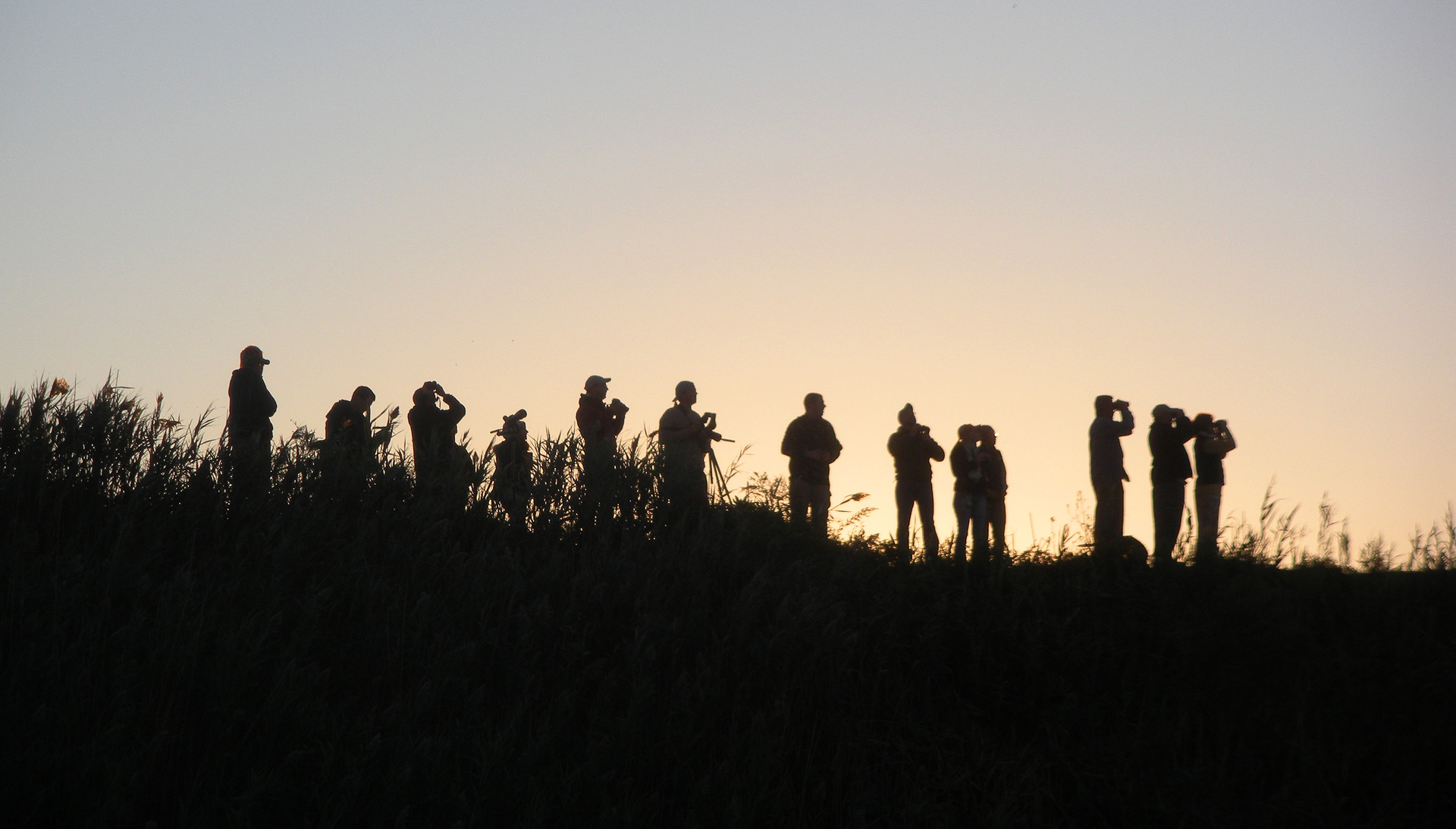
Birders at first light on Higbee Beach. Photo: © Billtacular / Flickr Claim to fame: Legendary funnel for East Coast migrants
When to go: March, April, May
What you’ll see: Anything and everything
Best for: Generalist birders and shorebird lovers
The Jersey Shore is for beachgoers and birds. It all boils down to geography: northbound migrants crash-land on Cape May’s point after crossing the Delaware Bay. Some birds don’t quite make it — there are stories of birders wading out into the surf to rescue exhausted songbirds that collapsed before reaching the beach.
Cape May is such a legendary and productive hotspot that you can find doorstop-sized books written about birds and birding on this tiny peninsula. It’s a place where anything can happen, and birders (like Jersey beachgoers) should be ready for the weird, rare, and unexpected.
Most of the action occurs west of the town, at a trio of sites: Higbee Beach WMA, Cape May Point State Park, and South Cape May Meadows, a Conservancy preserve. Another great site is Rea Farms, but to bird here you’ll need to purchase a pass from the Cape May Bird Observatory (CMBO) office. Before you go, check the Cape May Bird Observatory calendar for events guided walks, and their blog for birding and nature.
-
NYC’s Central Park, New York
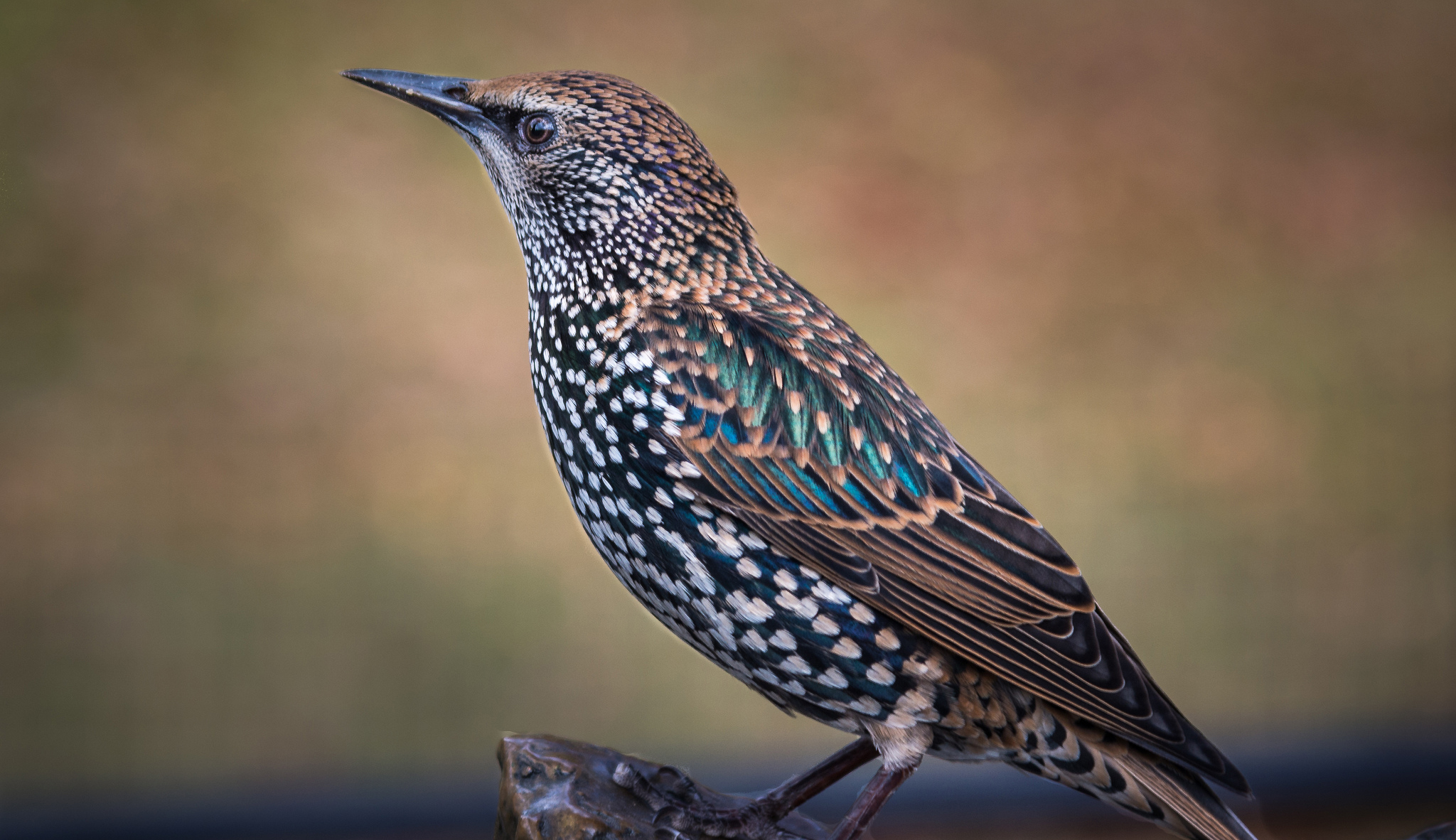
European Starlings aren’t native to the U.S. ⎯ Shakespeare enthusiasts released 100 birds in Central Park in the early 1890s, in the hope of populating North American with all the birds The Bard ever mentioned. Photo: © John St John / Flickr Claim to fame: A hotspot in an urban jungle
When to go: March, April, May
What you’ll see: Classic migrants in an unexpected setting
Best for: City-bound naturalists and beginning birders
Just trust me on this one. The heart of Manhattan is not obvious birding territory, but that’s exactly why you should bird here. Migrants flying high above New York look down and see one lone, dark patch of green amidst a veritable sea of lights and concrete — and they aim straight for it. (If you’re skeptical, check out “The Central Park Effect,” a documentary about Central Park birds and birders.)
You have a chance of seeing nearly all of the park’s 250 recorded species in the Ramble, a 36-acre wooded area with a maze of paths in the center of the park. Despite its rather seedy history, the Ramble’s woods make it prime territory for migrants. Next, scan the skies and lake at Belvedere Castle before swinging south to the Maintenance Meadow, the local birding nickname for the green space just southwest of the intersection of East Drive and the 79th Street traverse.
-
Point Reyes National Seashore, California
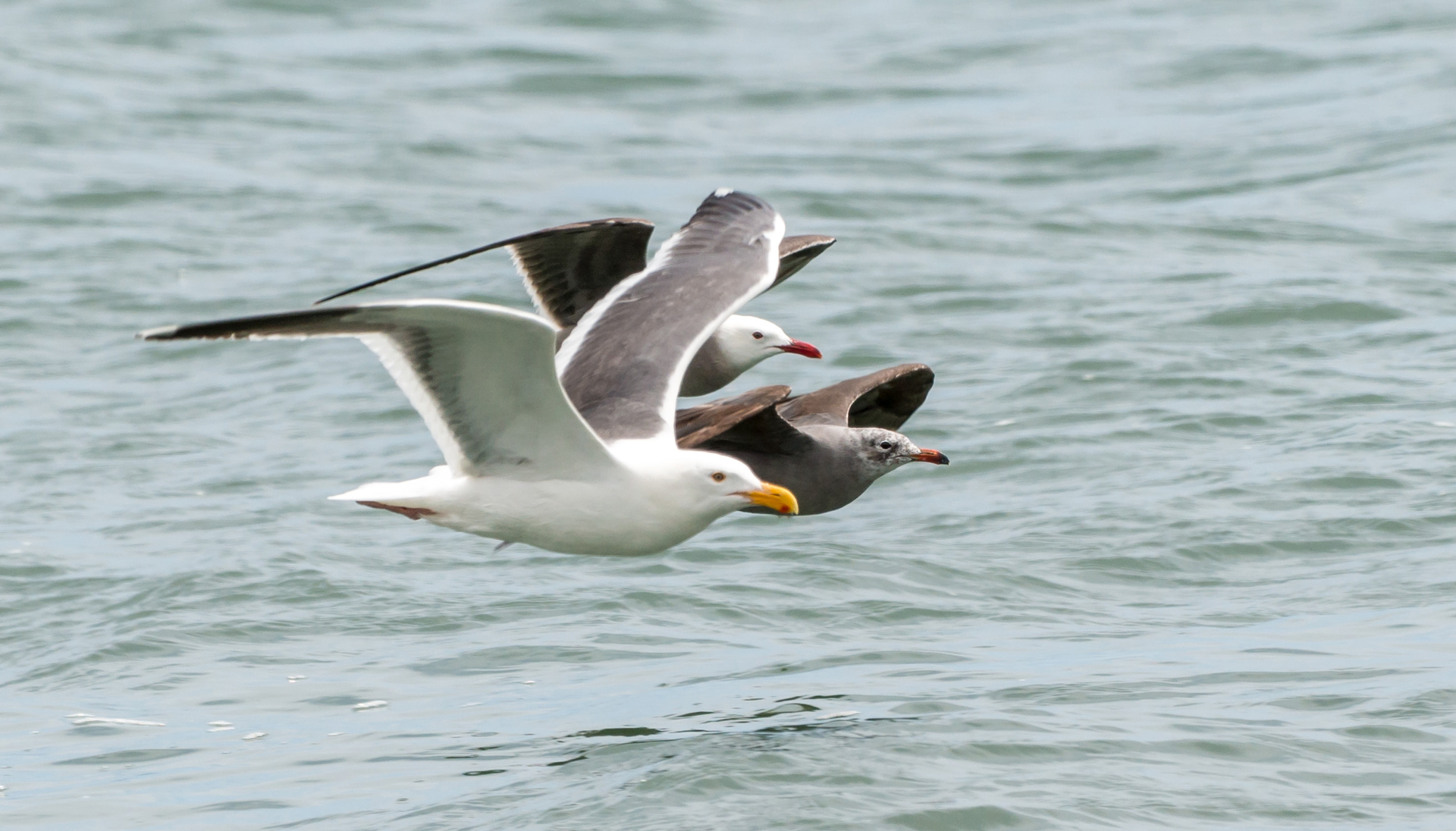
An adult Western Gull and two Heermann’s Gull at Point Reyes. Photo © Byron Chin/Flickr Claim to fame: 50 percent of all North American birds
When to go: March, April, May
What you’ll see: Tons of Pacific flyway species
Best for: Generalist birders
Roughly an hour north of San Francisco lies one of the best birding hotspots on the Pacific coast —Point Reyes National Seashore. With more than 70,000 acres of estuaries, coastal prairie, scrub, and forest, this hotspot has a wealth of different habitats to attract everything from shorebirds to warblers. Plus, the seashore’s peninsula projects 10 miles out to sea, drawing in open-ocean migrants and vagrants.
The Point Reyes bird list boasts nearly 490 species, or more than 50 percent of all birds found in North America. Keep an eye out for the snowy plover and the northern spotted owl, two threatened species that conservation scientists are monitoring at Point Reyes.
This hotspot is huge, so don’t expect to bird the entire seashore in one day unless you’re feeling ambitious. Birders new to the area should check out this list of popular birding locations or join one of the guided field trips during the Point Reyes Birding and Nature Festival.
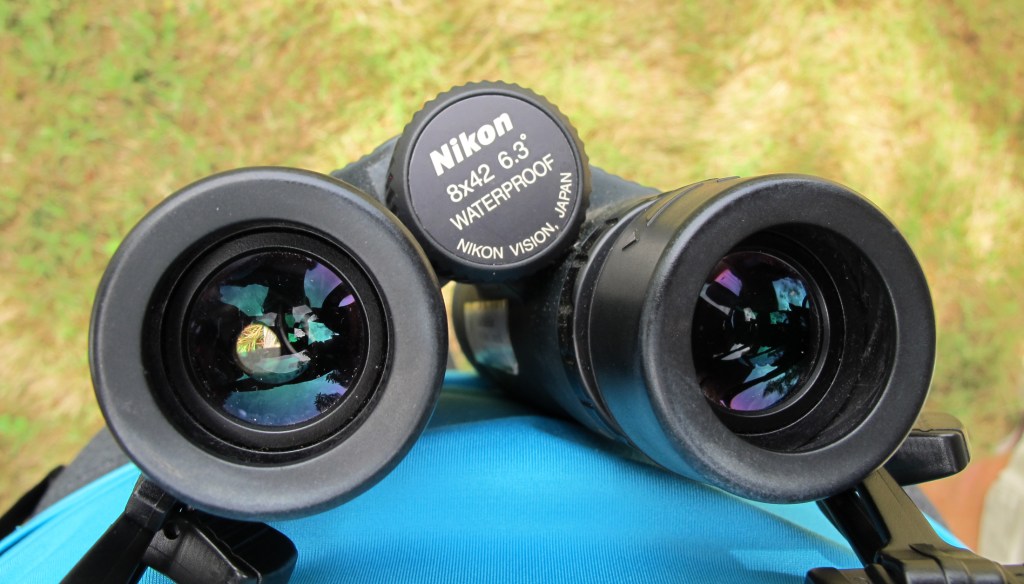



The Jamaica Bay Wildlife Refuge – the only wildlife refuge in the National Park Service – located in Queens, NY, is a must see for birders. People come from all over the world to see the spring and fall migrations. Go to http://www.nps.gov/gate for more information.
Don’t miss out on a trip to Alabama’s Dauphin Island. It is a true migrant trap and holds the promise of birds you just can’t spot anywhere else in Alabama!
Yukon-Kuskokwim Delta in Alaska!
AT MY FEEDER MANY PURPLE FINCHES HAVE SHOWN UP. THEY ARE BEAUTIFUL AND SQUABBLE WITH MY REGULAR HOUSE FINCHES AND SPARROWS. IT IS FUN TO WATCH THEM. KAB
HOW ABOUT IN THE WESTERN REGION IDAHO OREGON WASHINGTON?
I agree. They needed to mention the Malheur National Wildlife Refuge in southeastern Oregon. Amazing!!
Read the author’s last paragraph again.
Come to Magee Marsh in Ohio it is an amazing experience. It’s like being in an aviary but you are outside. The warblers are everywhere and if you can’t identify a bird the other people there wil tell you exactly what you are looking at.
Don’t forget Parker River National Wildlife Refuge on the coast of Massachusetts! It is really mind-blowing. You don’t even have to try to see zillions of migrants!
Any places in the west (or west coast)?
Quivira in Central Kansas may not have the variety of birds but it sure has the numbers of them in the Spring/fall migrations.
http://www.fws.gov/refuge/quivira/
I guess Canada is not on your map, hate to tell you, but the warblers are heading here
You should add Fort De Soto in Sarasota, Florida to your list. The Mulberry trees there attract so many Warblers. I visited for just a few hours last Thursday and added 12 Lifers to my list.
I live in south Louisiana & have been enjoying the great influx of birds flying through here! The waterfowl, raptors, songbirds! It’s been great!!!
For what it’s worth, High Island is not an actual island, “nondescript” or otherwise. It’s the elevated area over a salt dome. It’s minutely separated from the area to its north by the intercoastal waterway, but is geologically and geographically part of the mainland.
High Island is actually a salt dome. It has oil wells all around it’s base and oak motts at the top The birds can see these trees from miles out in the ocean, which makes it a great migrant trap. And the wading bird/neotropical cormorant rookery is amazing as well since you can walk to view it. It IS on an island on a little lake, but close enough for fabulous pictures.
How did Point Pelee National Park in Ontario Canada not make this list?!
Point Pelee was my first major birding and blew me away. Still Point Reyes is pretty amazing too.
Can we fit this in?